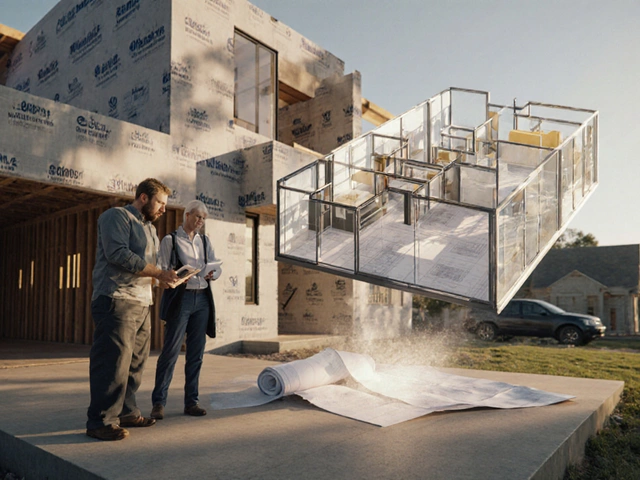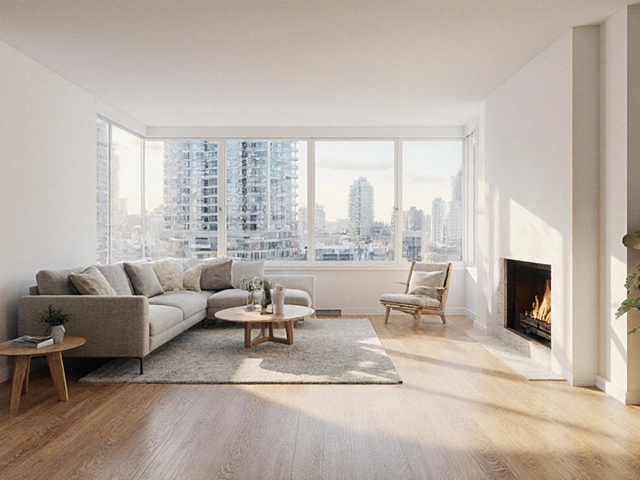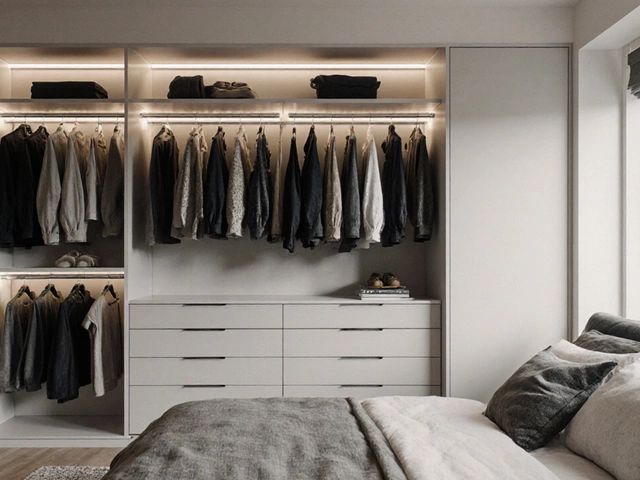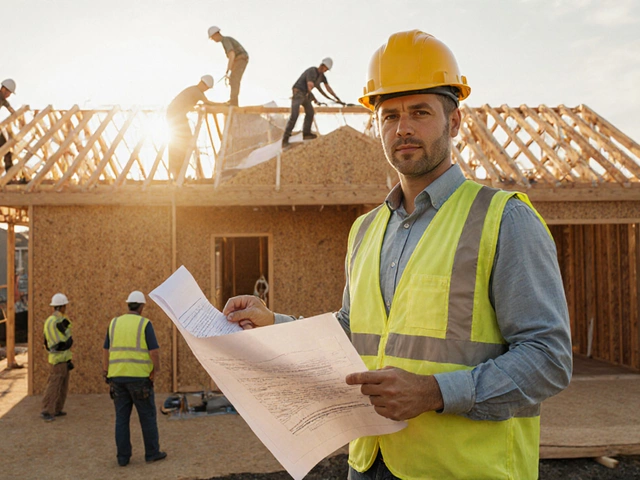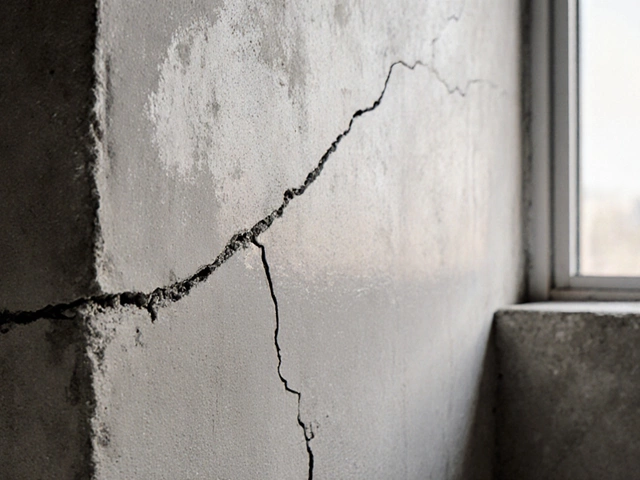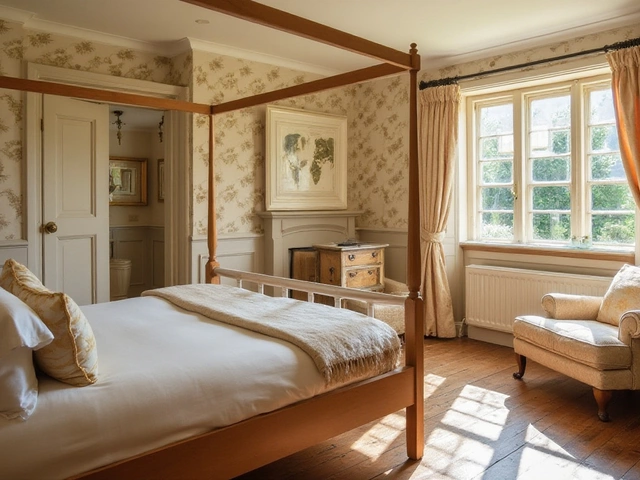Diving into the world of new build homes, it's a landscape filled not just with fresh paint and modern design, but with endless opportunities for customization and innovation. Unlike older properties, a new build is like a blank canvas waiting to be personalized, tailored to fit the lifestyle and needs of its first occupants.
These homes often showcase cutting-edge architecture and meet the highest standards of energy efficiency, embodying the progress in construction technology. With sustainability becoming a major priority, new builds offer buyers the chance to live in a home that works hard to minimize its environmental impact.
Yet, the journey to purchasing a new build isn't always straightforward. Navigating the choices of location, design features, and financing options can be daunting. Through this article, we'll explore what it truly means to invest in a new build home and share tips to help you turn this investment into a rewarding experience.
- Defining New Build Homes
- The Appeal of New Build Properties
- Energy Efficiency and Sustainability
- Challenges and Considerations
- Tips for Purchasing a New Build Home
Defining New Build Homes
New build homes stand at the forefront of residential real estate, embodying a fresh start and the promises of modernity and innovation. Unlike their older counterparts, these properties are not simply renovated but constructed from the ground up, often representing the latest in architectural styles and construction technology. A true new build is typically defined by its date of completion, signifying a structure that has been built and ready for occupancy within the last few months. They are not previous homes that underwent major renovations; rather, they are entirely new creations designed to meet contemporary needs.
The journey from an open plot of land to a completed home involves a series of meticulously planned stages, each aimed at ensuring that the final product is both aesthetically pleasing and structurally sound. From the initial architectural blueprints to the final coat of paint, every detail is scrutinized under modern building regulations, which are stricter than those of previous decades. These regulations ensure that new builds often feature enhanced energy efficiency, offering a greener, more cost-effective living environment. This emphasis on energy conservation is just one of the many reasons why new builds attract environmentally conscious buyers looking to reduce their carbon footprint.
Interestingly, the allure of new build homes is not confined to their structural integrity or energy efficiency. The idea of being the first occupant in a pristine property holds a unique charm. There’s a certain satisfaction in knowing that everything from the windows to the wiring is brand new and that the design choices reflect the current homeowner’s preferences, unblemished by years of previous use. New builds also offer the possibility of customization, with developers often providing buyers the chance to choose finishes, fixtures, and even layouts. This level of personalization allows homeowners to tailor their surroundings to match their lifestyle perfectly.
According to an article in The Guardian, "New build homes cater to a wide range of tastes and budgets, offering buyers the chance to step into a property where nothing needs doing, freeing them to focus on personalizing their living space rather than pouring time and resources into renovations."
However, as enticing as new builds might be, potential buyers should approach with a measure of diligence and caution. While modern building codes are stringent, buyers should ensure that developers have complied with all necessary inspections and certifications. The process of purchasing a new build can differ significantly from buying an established home, often involving different contractual agreements and developer terms. Understanding these differences is crucial to making an informed investment in real estate.
For those who are wary of potential pitfalls, it's wise to research the builder’s reputation and review any available past projects. Engaging with neighbors in newly developed areas can also provide insights that might not be evident in a showroom or brochure. In essence, while new builds offer an appealing package of comfort and contemporary living, being mindful of the finer details ensures that the dream of owning a brand new home remains a thoroughly positive experience.
The Appeal of New Build Properties
Stepping into a new build goes beyond the allure of pristine walls and untouched flooring; it represents a fresh start brimming with endless possibilities. These homes are often sought after for their modern aesthetics and innovative designs that stand distinct in the real estate market. A significant draw of new builds is their alignment with contemporary lifestyle needs, offering features like open-plan living areas, high-tech kitchens, and smart home devices that cater to the digital age. This adaptability allows homeowners to craft spaces conducive to both relaxation and productivity, a necessity in the dynamic rhythms of today's life.
Beyond visual appeal, new build properties boast high energy efficiency, a cornerstone of modern construction aimed at reducing environmental impact. Many new builds integrate sustainable materials and cutting-edge technologies to lower carbon footprints. Features such as triple-glazed windows, solar panels, and advanced insulation contribute not only to eco-friendliness but to significant long-term cost savings on utilities. This appeal extends to ensuring healthier indoor air quality, thanks to the use of non-toxic materials and superior ventilation systems.
Another compelling aspect is the variety of customization options available. Buyers often have the chance to influence design elements and choose finishes that resonate with their personal tastes. This level of personalization, which is rarely available in pre-owned homes, caters to a growing demand for individualized spaces. Buying from a reputable builder who offers bespoke design options adds significant value to the experience of homeownership.
"A home must function as a machine for living," said the famous architect Le Corbusier, highlighting the importance of utility and design in new builds. This sentiment underscores the shift towards integrating functionality with elegance in modern homes, a trend prevalent in new constructions.
The appeal of new builds is not only about their physical attributes but also the ease of purchase they often present. Many new builds come with warranties that cover structural integrity and fixtures for a number of years, offering peace of mind against unexpected repair costs during the early years of homeownership. Moreover, these properties sometimes qualify for government incentives aimed at promoting modern housing developments, potentially lowering the financial barriers for first-time buyers.
The growing interest in new builds can also be partly attributed to their strategic locations. Developers tend to position these developments in burgeoning areas serviced by new infrastructure, providing residents with modern-day conveniences like environmentally conscious transport options, expansive green spaces, and proximity to urban centers. This alignment with progress, both in functionality and location, reinforces the desirability of new build properties in a market that's continually seeking innovative solutions to meet 21st-century living standards.

Energy Efficiency and Sustainability
When it comes to new builds, energy efficiency and sustainability are at the forefront of modern construction practices. Builders today are utilizing advanced technologies and materials designed to create homes that are not only cost-effective but also environmentally friendly. The innovation in insulation comes first to mind, with high-performance windows and tightly sealed construction methods reducing heat loss, making homes markedly more energy-efficient. These components work together to create an envelope that minimizes energy consumption, leading to reduced utility bills and a smaller carbon footprint.
Moreover, new appliances and systems within these homes are selected for their energy-saving capabilities. Energy Star-rated appliances, for instance, use significantly less electricity compared to older models, sometimes up to 50% less, depending on the appliance. This is a significant draw for new homeowners who are conscious of their energy use either due to their pocketbooks or a desire to help the environment. Solar panels are now more frequently included in the initial construction phase, an attractive feature that aligns with the drive towards sustainable living.
Incorporating Renewable Resources
Builders are also increasingly turning to renewable resources to sustain the construction process and the homes themselves. Lumber from sustainably managed forests, recycled building materials, and locally sourced products are becoming standard. Such practices not only reduce the home’s environmental impact but also enhance its value and appeal. The emphasis on sustainability extends inside the home, where LED lighting is standard, and smart home technologies allow homeowners to effortlessly monitor and reduce their energy consumption. These advancements contribute significantly to lowering a home's lifetime energy demand and associated costs.
"The way we build today determines the world we live in tomorrow," says architect and sustainability expert, William McDonough.
The commitment to sustainable development doesn’t stop with construction materials and energy use. Many new build communities are designed with integrated green spaces, dedicated bicycle lanes, communal gardens, and even areas for urban farming. This not only augments the residents' quality of life but also enhances biodiversity and the local ecosystem. It’s a holistic approach that mirrors broader societal shifts towards environmentally integrated living.
Home design in new builds often considers passive solar gain. This refers to using the sun's energy for heating living spaces, an age-old concept, now modernized and tailored to current needs. The orientation of the house, the use of thermal mass, and strategic placement of windows and shading devices are all optimized to harness solar energy, reducing reliance on traditional heating methods. This energy-conscious design significantly contributes to the sustainability factor of new constructions. An emerging trend is the net-zero energy home, a property that produces as much energy as it consumes, achieved through superior insulation, airtight envelope, and renewable energy sources like solar panels.
Overall, the appeal of new builds' energy efficiency and sustainability cannot be overstated. Not only do these homes offer financial savings and environmental benefits, but they also represent a lifestyle shift towards a more sustainable and thoughtful way of living. As technology continues to advance, the outlook is promising for even more refined and efficient methods to make future homes an integral part of the solution to global environmental challenges.
Challenges and Considerations
When considering new builds, several challenges and considerations often surface that can affect your decision-making process. One of the primary hurdles involves understanding the timeline of construction. New builds frequently operate on an aggressive schedule to meet the high demand in the real estate market. Yet, delays can occur due to unforeseen circumstances such as weather conditions, labor shortages, or supply chain disruptions. As a buyer, knowing how these factors can alter the completion date is vital, enabling you to adjust your plans accordingly. It's not uncommon for projects to extend several weeks or even months beyond the original deadline, which might require temporary living arrangements or renegotiation with your lender.
Another significant consideration is the potential for additional costs, which can sneak in under the guise of upgrades or necessary changes. While new builds offer shiny appeal and the promise of no immediate maintenance, costs can escalate quickly if you're drawn to customizing fixtures, finishes, or landscaping. It's crucial to have a frank discussion with your builder about what's included in the standard package and what qualifies as an upgrade, ideally getting it in writing. Transparency here can help avoid those budget-busting surprises. According to the National Association of Home Builders, hidden costs can add up to about 10% of the total purchase price due to upgrade fees.
Moreover, navigating warranties and post-construction service is a unique aspect that sets new builds apart from purchasing existing homes. A warranty often accompanies new constructions, promising coverage on everything from structural components to appliances. However, the specifics can vary, and sometimes the devil is in the details. For instance, a two-year warranty on mechanical systems isn't uncommon, but some might extend to only one year. It's prudent to read every line of the warranty document, questioning ambiguities and clarifying expectations. As Rick Taylor, a senior home inspector once said, "A clear understanding of your home’s warranty can save you countless headaches in the years to come."
Finally, the location of new builds can also present challenges. Often situated in areas of development, they might not have the same level of established infrastructure and amenities that you find in older communities. This could affect your daily life, from commuting times to school options and even access to emergency services. Urban fringe developments might promise future growth and investment potential, but they require patience as shops, schools, and services gradually catch up with the residential boom. Balancing these considerations necessitates some foresight and exploration of long-term community plans, like those available from municipal planning departments.
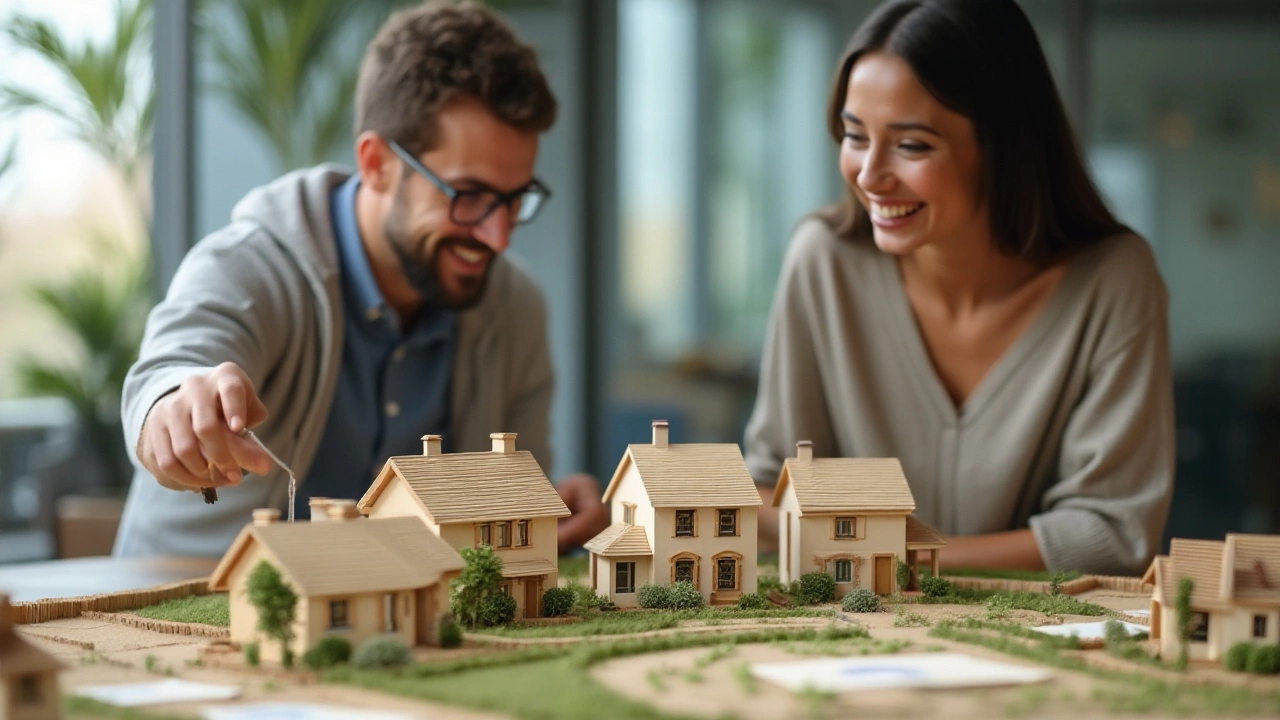
Tips for Purchasing a New Build Home
Purchasing a new build home involves a myriad of factors to consider, from the glossy brochures to the reality of settling in a freshly constructed property. These homes, with their modern amenities and eco-friendly designs, can seem like the perfect choice, yet it's crucial to approach the purchase with careful planning and realistic expectations. For starters, research is key: understanding the reputation of the developer is vital since the quality of construction and post-sale service hinges on their credibility. Visiting previous developments can give you insight into the developer's typical finishes and build quality. Prospective buyers should also be aware that whilst many of these homes come with warranties, such as the NHBC in the UK, or similar guarantees elsewhere, these do not cover everything. It's essential to read the fine print and know exactly what protections you're afforded.
"When looking into purchasing a new build, one should not assume everything is perfect due to its newness," notes a seasoned real estate agent, offering perspective into the nuances of new property purchases. "Detailed inspections and an understanding of the market can prevent many headaches down the line."Consideration of the location is another critical aspect. Often, new builds are situated in burgeoning communities or on land that was previously underdeveloped. While this might offer substantial growth potential and community development, it may also mean living amidst ongoing construction or in a less-established neighborhood. Investigate the development plans for the area to ensure you're comfortable with what's forthcoming both in terms of infrastructure and potential noise pollution. If the property is part of a larger development plan, find out what other amenities are planned—such as schools, parks, and shopping centers—as these will contribute significantly to lifestyle quality and potentially, your home's future market value.
Securing the right mortgage tailored for new builds can differ from purchasing older properties. Some lenders might offer special deals for unused properties, but they often come with conditions, such as stricter deadlines to complete the purchase. It's advisable to seek advice from a mortgage broker who understands the intricacies of financing newly constructed homes. Additionally, one should remain vigilant during the snagging period. This stage, which involves checking for minor issues that the builder needs to rectify, can be detailed. Although it might seem like minor cosmetics, addressing these snags early ensures your home is exactly as you expected and aligns with the specifications agreed upon at purchase.
When envisioning a new home, customization is frequently on the buyer's mind. Many developers offer customization options, from selecting countertops to deciding on the color palette. However, it's crucial to be realistic about add-ons. Each extra feature can increase the final price, and some upgrades might not add significant long-term value to the property. It's always a good idea to balance desires and budget. Lastly, the completion date can be a moving target when it comes to new homes. Building projects are often subject to delays due to weather, supply chain issues, or workforce availability. It's beneficial to maintain flexible moving plans and avoid committing to exact dates until the developer confirms the completion.

